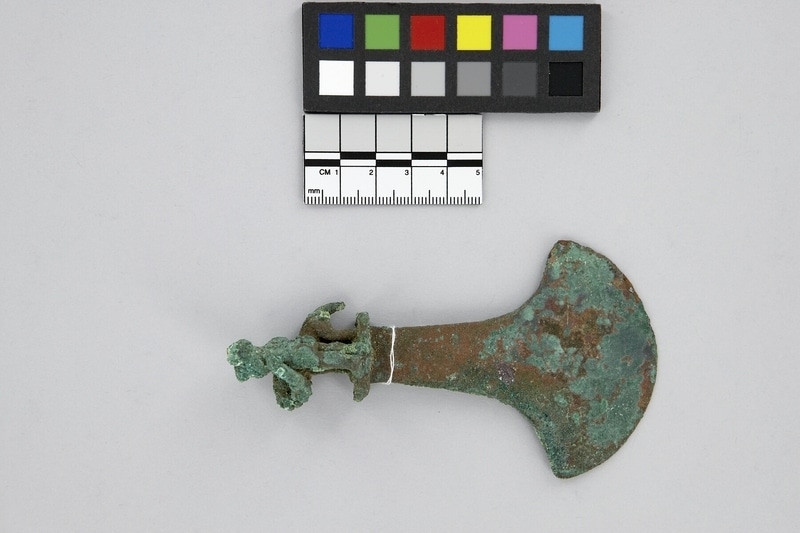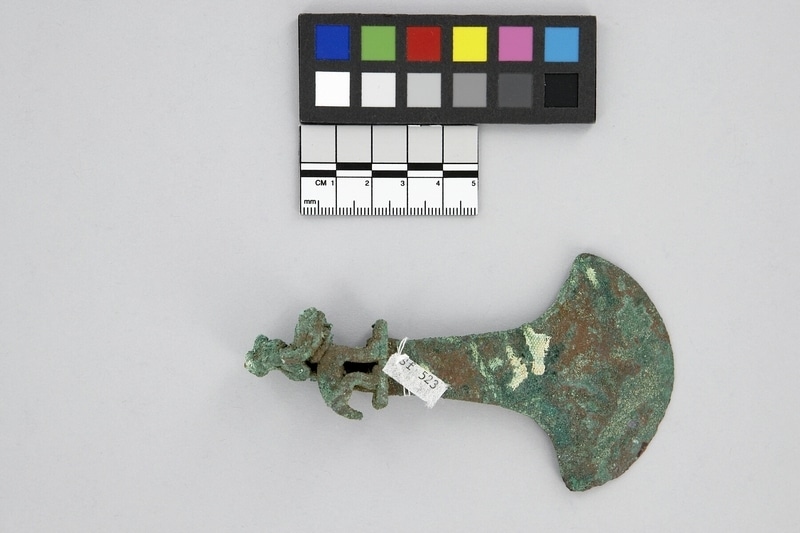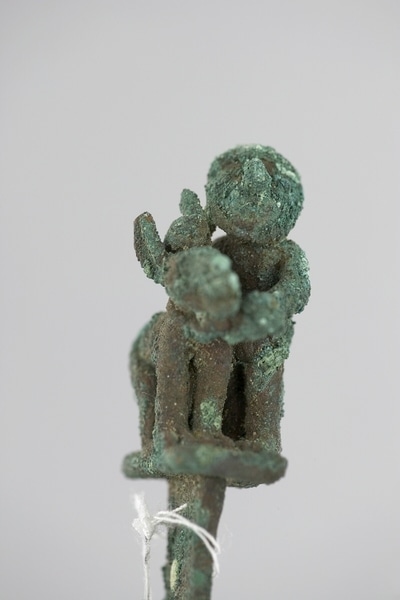Knife Item Number: Sf523 from the MOA: University of British Columbia



Description
A flaring blade with a semi-circular cutting edge is surmounted by a sculpture of a standing human figure and a long-eared quadruped. The human holds the animal by one ear and by a rope around its neck. The human wears a wrapped headdress with chin strap. Several fragments of plain weave cotton cloth with paired warps are adhered to the blade.
History Of Use
This may be a ceremonial blade as ones of similar shape are frequently shown on Moche ceramic depictions of human decapitation (Jones).
Narrative
Vicus/Moche Style; contemporary with Moche 1 and 2, 0-200 C.E. Other cast copper blades, elaborated at the top with small sculptures are said to come from Vicus (Jones). Stylistically, the sculpture accords well with Vicus and Moche sculpture.
Iconographic Meaning
The large carved animal may be a llama or deer as both are ungulates depicted with ropes around their necks in Moche art. The neck rope is often connected with the prisoner/sacrifice themes. It appears frequently on naked or decapitated humans and on depictions of so-called 'prisoner jar' ceramics.
Item History
What
- Name
- Knife
- Identification Number
- Sf523
- Type of Item
- knife
- Material
- copper metal
- Manufacturing Technique
- cast
- Overall
- height 12.0 cm, width 6.7 cm, depth 2.1 cm
Where
- Holding Institution
- MOA: University of British Columbia
- Made in
- Peru
When
- Creation Date
- during 200
- Collection Date
- between 1949 and 1966
- Ownership Date
- before May 4, 1981
- Acquisition Date
- on May 4, 1981
Other
- Item Classes
- metalwork
- Condition
- poor
- Accession Number
- 0711/0026